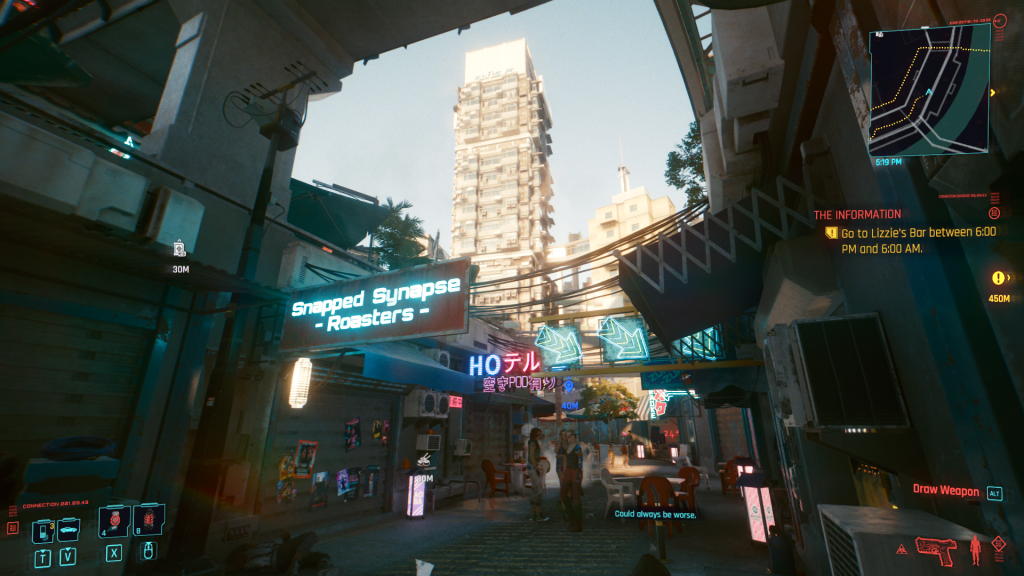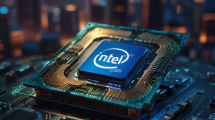The reason behind and restrictions
Cyberpunk 2077 sets new standards for graphics and therefore hardware. But not only the graphics card and CPU, but also the RAM can play an important role for the FPS, as we recently found out when testing the Patriot Viper Steel RGB for the first time with Cyberpunk as benchmark. In today’s review, we’ll be comparing different RAM configurations on the latest and fastest platforms from AMD and Intel to see how you can get the most frames out of your CPU and graphics card. Because it is often forgotten that although the image comes from the graphics card, the CPU and RAM have to deliver the data for it in time. Recently, AMD has also brought the efficient management of memory resources to the fore with the RX 6000 graphics card series and the “Smart Access Memory”. Today, we’re going to take a look at how even simple tuning of system memory bandwidth can significantly improve our gaming experience in Night City.
On the one hand, we are now focusing on different bandwidths while maintaining the same latency. For this, the clock and primary timings are increased analogously from one configuration to the other, so that the effective latency remains the same and we eliminate it as much as possible a variable. So much for the theory, practically there are limitations on the AMD Ryzen platform with the RAM clock due to the Infinity Fabric and with the adjustable latencies due to Geardown mode. Even if we cannot therefore draw perfect comparisons between the configurations in some cases, the discernible trends are still noteworthy.
Furthermore, we contrast single rank and dual rank configurations at the same clock and timings. Here, of course, there were also limitations in terms of compatibility. For example, we could not get DDR4-4400 to work with tCL 22 in dual rank on Ryzen. So you can see, we had some fun with the current state of AMD AGESA and BIOS versions, but every other Cyberpunk gamer with an AMD system has to deal with that as well. Further tests, for the different command rates or for optimized latencies at high clock rates, are already on the agenda, but on the one hand the patch 1.05 got in our way and on the other hand it gets confusing at more than 14 data points per diagram. So keep your eyes peeled for a potential second installment to the Cyberpunk memory test.
Test systems and methodology
The following is an overview of the test systems and the tested RAM configurations:
| Test systems | |
|---|---|
| Hardware: |
AMD Platform: Intel Platform: Nvidia GeForce RTX 3090 Founders Edition graphics card Tested memory configurations:
|
| Cooling: |
TechN CPU Waterblock AMD AM4 CPU block Supercool Computers Direct Core MARK 6 CPU block |
| Housing: |
Open Benchtable Lian-Li O11 Dynamic |
| Periphery: |
Benq XL2720 monitor Acer XB270HU monitor |
And here is an overview of the abbreviations:
- SR = Single-Ranked
- DR = Dual-Ranked
- GDM = Geardown Mode
- 2T = Command rate 2T
- CL = CAS Latency (=tCL)
- 1:1 = UCLK and FCLK run with the same clock, Infinity Fabric (IF) and main memory thus run synchronously.
- 1:2 = UCLK runs with half the clock of FCLK, Infinity Fabric (IF) and RAM thus run asynchronously.
- 10900K = System with Intel core i9-10900KF CPU
- 5950X = System with AMD Ryzen 9 5950X CPU
As a benchmark, we use a 60-second driving and running course around the “Kabuki Market”, which allows us to reproducibly examine the various hardware requirements of this game title. The data was recorded and measured with the Nvidia Frameview tool, based on the open-source software PresentMon.
The tests were done with the preset “Raytracing Ultra” in the resolutions 1080p, 1440p and 2160p and with the patch 1.04 without any config modifications outside the game UI.

































Kommentieren